Greece’s Only Travel Guide You Need For A Great Trip in 11 Easy Steps
- Destinations Europe
Cruisit Team
- September 23, 2022
- 0
- 4901
- 86 minutes read
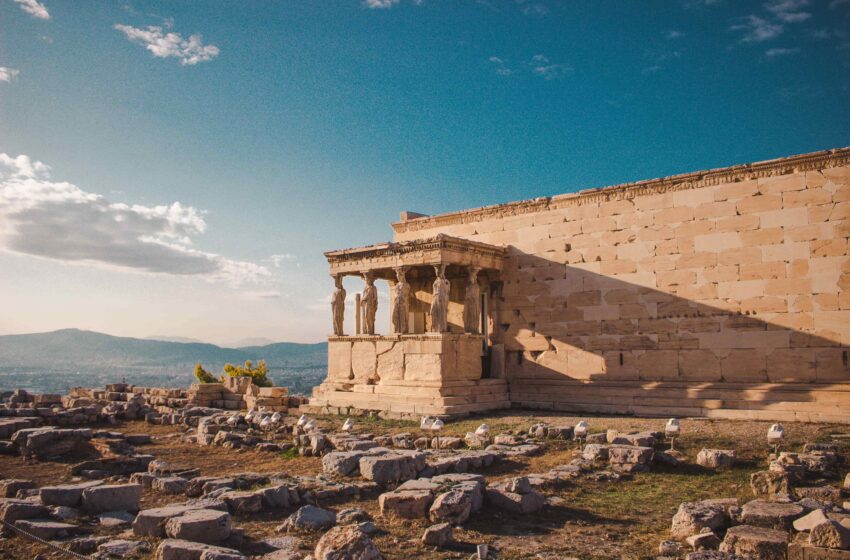
Greece’s Background
The birthplace of Western civilization is traced back to 7,000 BC with Stone Age farmers in Greece, until the beginning of the Bronze Age around 3,000 BC, which led to a more sophisticated society appearing by 2,500 BC on the island of Crete known as the Minoans. This civilization invented linear writing, a type of hieroglyphs, as well as tools and weaponry which helped in their expansion and development. They also traded with Sicily, Egypt, Cyprus, and other Mediterranean civilizations. After 1450 BC, the Minoan civilization began to crumble. The Mycenaeans swept throughout the mainland around 1600 BC but declined around 1200 BC. After Dorains conquered Mycenae and brought iron, around 800 BC, Athens and Sparta arose as civilizations. Darius led a Persian army to Greece in 490 and 480 BC, but they were crushed both times. Before then, Greece had no allies or a united front until Athens created the Delian League. They fought Sparta from 431 to 404 BC, but Sparta won. Thebes defeated Sparta in 371 BC, and Sparta and Athens later joined forces to attack Thebes and won. In the 5th and 4th centuries BC, Greece produced the world’s finest thinkers, mathematicians, and the Olympic Games. In 338 BC, the Macedons defeated a Greek coalition and took control of Greece. Shortly after, Alexander the Great’s dominion included Macedonia, Greece, Egypt, and India, spreading Greek civilization to the Middle East. When Alexander’s strength declined, Greek city freedom was short-lived as Rome rose. Romans conquered Macedon in 168 BC and Athens in 86 BC, however, Greece prospered under the Romans.
In the 1st century AD, St. Paul visited Greece and converted many to Christianity. When the Roman empire split, the eastern Roman Empire became the Byzantine Empire, with Constantinople as its capital. During Heraclius’ rule, Greek became the official language of the Byzantine Empire as links with Western Europe faded. In 1054, the Eastern Orthodox Church split from the Western Church. The Byzantine Empire lost land to Crusaders in 1204, but Constantinople was restored by 1261. However, the Empire remained in decline once the Ottoman Turks emerged. Constantinople’s collapse ended the Byzantine Empire in 1453, and from the 15th to the 19th century, Greece was ruled by the Ottoman Turks until nationalism developed and the French, British, and Russian fleets won the Battle of Navarino in 1827, lead to Greek independence in 1829. In 1833, King Otto founded Greece’s monarchy with western aid and later followed by King Dane, though, many Greeks left to the US in the 19th and 20th centuries. In 1912, Greece and her allies Bulgaria and Serbia battled against Turkey, then fought against Bulgaria, increasing Greek territory. First neutral, then allied, Greece took Smyrna in 1922. (Izmir). They made peace with the Turks and began a large population swap, with millions of Greeks leaving Turkey and hundreds of thousands of Turks leaving Greece. In 1940, Italians invaded Greece but were immediately forced back into Albania. In 1941, Germans attacked and occupied Greece alongside the Italians. In 1944, due to the suffering defeat in WWII, the Germans retreated. During the 1950s and 1960s, Greece grew prosperous for a short period. Soon after, political and civic instability erupted, leading to Greece becoming a republic. A 1967 military coup introduced military dictatorship, but democracy was restored in 1974. Greece then joined the EU in 1981 and adopted the euro two decades later. Since then, Greece has recovered from its turbulent history, and despite its economic struggles, it remains a dream tourist destination to millions.
Greece sits on the southeastern flanks of Europe at the tip of the Balkan peninsula, and is a country that’s a fast-growing hotspot for tourists and for obvious reasons. It is the epicenter of the western civilization and has left an indelible mark on the world in many ways, including the way we think, create art, play sports, and even speak. Greece has had an effect on everything from the Olympic games to the words we use and the politics that shape our daily lives. Greece is also a popular destination for vacationers in search of sunshine thanks to its Mediterranean climate, beautiful beaches, picture-perfect islands, and rugged interior outlines by a mysterious Olympian pagan mythology. In terms of diversity, this country is ideal for tourists because it provides something for everyone.
It’s not hard to see why stories like ones involving Zeus and other mythological deities originated in this area. Everywhere you look there’s a legacy lying around the corner. As these mystical characters sit on their throne above Mt. Olympus they can look down at the dazzlingly blue Aegean Sea sparkling with the myriad jewels we call islands, scattered as far as the horizon, it is a fairytale view full of excitement. Whether you choose to reflect in solitude like Plato and Aristotle or go wild and party like the Bacchantes, the country has it all.
Greece is a land of sun-bleached ruins that penetrate the blue sky, the warm waters of the Aegean that lap at an infinite shoreline, and a culture that pulses with ardent music, delicious food, and exciting adventures. Enter the first Olympic competition arena. The monasteries of Meteora are set atop massive rocks, and to reach them, visitors must up stone stairs. Take in an old outdoor play under the stars, be awed by colossal marble statues salvaged from the Aegean, and muse over the wisdom of the oracle in Delphi. Then you’ll come across some striking examples of contemporary art, the bluesy pulse of rembetika, and craftspeople giving fresh life to age-old practices. The cultural events calendar in Greece is jam-packed with holidays, celebrations, and exhibitions.
“Greece has a legendary history as a crossroads of numerous civilizations, making it a tourist hotspot with attractions everywhere from its crowded cities to its secluded hilltop vistas. Go on an adventure into the wilds of the country, share a meal with some friendly people, and discover the region’s rich history and world famed legend.”
The Greek people are resolute and proud people who enjoy life and value their drama series, but above all, they have the knack for making it out of adversity and surviving. Their stories of survival are legion: the Persians tried to conquer them and received a blow to their pride ; the Romans conquered them but discovered they had been so thoroughly absorbed into Greek culture that they may as well have been Greek themselves; then the Ottoman Turks ruled over Greece for a long time too; and so on and so forth; but one thing remains true, is that they went through it all and preserved their identity. In Greece, spending time with friends and family is more than a hobby; it’s a need. Young people chitchat and elderly residents argue animatedly at the cafes. Friends stroll arm in arm and restaurants are packed with long tables for large parties. The squares are the hubs of community activity. Coffee, ouzo, a bouzouki chorus, and local celebrations are all great ways to immerse oneself in the culture. Even in the midst of adversity, the Greeks maintain their fiery spirit and zest for life. The end effect is a country that seems like it’s full of problems but is actually full of happy people.
Many of the staples of Greek cuisine may be grown right in the kitchen garden. While staples like feta and olive oil are available everywhere, visitors will also want to taste the regional specialties and cuisines that make a trip to Greece so memorable. Try some of the local specialties, such as mussels boiled in ouzo, bread baked with olives, and fresh seafood. Try some sharp, hard rounds, honeyed soft cheeses, and crumbly feta. Discover Turkish spices weaved into light desserts and Italian inspiration in risottos and pastas. Chefs are taking classic dishes to new gastronomic heights as part of a resurgence in traditional cookery.
From island to museum hopping, Greece has a lot to offer visitors. Greece has something for everyone, whether you’re an extreme sports fanatic or a beach bum at heart. Under a clear blue sky and a sea dotted with islands, each with its own stretch of the white sand, pine tree-shaded beaches of your fantasies, the days will seem to blur into one another. Explore the verdant woodlands, ride your bike by dolphins and marine turtles, and pedal along Byzantine trails. Walk leisurely among olive orchards, quaint towns, and petrified woods. Extreme sports enthusiasts may find breathtaking spots to go kiteboarding, wreck diving, or rock climbing. You may perhaps just go on a boat and sail off into the azure horizon. The terrain is dotted with ancient temples and ruins, villages are painted white to keep off the summer heat, the deep blue sea hides treasures, olive orchards fill the valleys, and the mountains provide enough chances for outdoor recreation. And when the day is done, you may reward yourself with some of Greece’s renowned culinary specialties, and they are fantastic!
Visitors can get to Greece via train, bus, car, air, or boat. Traveling between the Greek Islands is possible via ferry, but many visitors opt instead to set sail towards this stunning region. While Athens may be the most hectic city in Greece, it also provides some of the best opportunities to experience the region’s rich history, culture, and food. Regardless of how you choose to explore the area, you’ll probably be captivated by the region’s stunning natural beauty, delicious local food, and hardy inhabitants. The bus system and metro in this nation often offers the lowest fare options. Bus service is quick and reliable across the board. Although the train is more expensive and takes longer to get to your destination, it is the most comfortable way to travel.
Greece used to be one of Europe’s go-to spots for tourists on a tight budget. No longer is this the case, and costs are now on level with the rest of Europe. You can find better prices and lower travel expenses if you skip the more popular tourist locations, especially on the Greek Isles. Even the cost of food has been known to fluctuate widely. Get off of the main plazas and away from the hordes of tourists. A lot of the eateries here are family-run and/or locally-owned, thus the prices are more reasonable. Go souvenir shopping while cruise ships are not in port so you can avoid the crowds. When it is not assumed that you have just disembarked from a cruise ship, you will find that prices drop significantly. However, you can even find great deals in the shoulder season and definitely better ones in the low season, but with a tradeoff, and that is the weather.
Staying on the move will allow you to take advantage of all that Greece has to offer visitors. This Cruisit Greece travel guide provides an itinerary that strikes a balance between leisure and exploration. Arrive in this untapped paradise in the Southeastern Europe, with a European and Balkan vibe, and enjoy it to the fullest. The following itinerary for Greece is tailored to the country’s peak tourist season, but is best enjoyed during the shoulder months. With sunny days spent in ancient parts of town in the company of legend, or surrounded by verdant peaks and dramatic picture-perfect scenery, and tens of species to spot while exploring on your hikes, Greece will fulfill your wildest dreams.
Moreover, we will provide you with all the information you need to go across Greece with ease by providing you with a comprehensive travel guide. As you read on, you’ll learn about the best of what Greece has to offer—its cities, sights, transit options, and more. If you’re pumped up enough, then let’s get started!
- Visit Athens (Athína, or Αθήνα) to see the Acropolis and the world-famous Parthenon, but also to see all the other incredible monuments.
- Tour the islands of the Aegean Sea (Αιγαίo Πέλαγος).
- Hike Mount Athos (Οros Αthos, or Όρος Άθως) is an independent state in northern Greece that is home to twenty Eastern Orthodox monasteries and is exclusively male.
- Head to Meteora (Μετέωρα), which consists of six monasteries built atop granite pillars, is absolutely breathtaking. There is no problem with females coming here.
- Explore Delphi (Δελφοί)), the most significant location in all of ancient Greece, and the Oracle of Delphi was consulted regularly for advice.
- Crete (Kríti, Κρήτη) is a fantastic destination whether you’re looking to have fun or learn about the ancient world. Party at the resorts of Malia (Μάλια) and Hersonissos (Chersónisos, or Χερσόνησος)) cater to the most hedonistic travelers. Explore the Palace of Knossos (aka Cnossos, Knossus, Cnossus, or Κνωσός)
- Visit the dreamy Santorini Island, (Σαντορίνη,Thira, orΘήρα), is famous for its breathtaking scenery, which includes residences and windmills painted white.
- Act like you’ve already won the Olympic gold in the original venue of the games, Olympia (Ολυμπία).
- Lay back in Mykonos (Μύκονος) is a great place to unwind and have fun.
- Take a hiking excursion in the region of Zagori (Ζαγόρι) or take a driving journey via Peloponesse (Πελοποννήσου), the southernmost mainland region of Europe, replete with ancient Greek temples, Byzantine churches, and uninhabited beaches.
- Unfortunately, many visitors to Greece focus just on the islands, losing out on the mainland and all the splendor that Athens has to offer.
- Despite the fact that the Greek script is not the same as the Latin alphabet, most signs are written in both. Still, it’s a good idea to bring along an alphabetized phrasebook just in case.
- About 17 million tourists, the most majority of them, Europeans, go to Greece every year, making it one of the top twenty tourist destinations worldwide.
- Greece’s international ferry system provides quick and easy access to the country’s neighboring islands. It has frequent ferries between the islands and with neighboring nations.
- If you intend to see a number of different towns and perhaps even islands while in Greece, you might find that renting a car is the best option. However, it might be costly and useless if you are staying in a single location that is well served by public transportation.
- In much of Europe, cash is king, and Greece’s is no exception to this rule.
- Plan ahead and book early to save money, as is the case with nearly all vacation arrangements.
Crime & Scams in Greece
In terms of tourist safety, Greece is among the top countries in the world. Travelers probably won’t have to worry about being victims of crime or violence. Minor street crime is the only thing to worry about, but common sense precautions will ensure a trouble-free trip. Athens is one of the safest cities in Europe, if not the world, despite the fact that crime has been on the rise, which by Greek standards is an epidemic. Nonetheless, the city is gaining a reputation as one to avoid, or at least to visit briefly only to view the Acropolis. Human trafficking, people smuggling, and drug criminality are the gravest problems Greece faces. However, again, it has nothing to do with tourists. These trafficking networks in Greece are run by members of a variety of international criminal organizations that are also responsible for extensive acts of theft, most notably of priceless artworks, as well as other forms of white collar crime.
Violence against tourists is uncommon in Greece, thus single women visitors should feel comfortable exploring the nation.
Be especially cautious if you are in public places frequented by foreigners, near official buildings, popular tourist sites, or on public transit. Avoid going to slum regions of the city. Take extra precautions on city streets, especially after dark or if you are alone. Carry no significant sums of money or wear expensive watches or jewelry. Avoid using your phone while walking down the street.
Healthcare in Greece While Traveling
The Greek healthcare system has been deemed outstanding by the WHO. Finding a physician who is fluent in English and maybe other languages is usually not difficult in Greece. All things considered, the standard of treatment provided by the medical staff in Greece’s public hospitals is high. However, the public healthcare sector’s bureaucracy and culture of corruption drastically lowers the quality of service. Furthermore, there are frequently lengthy delays. Typically, private medical facilities are more up-to-date, sanitary, and more equipped than public ones. Note that you will have to cover any medical expenses if you’re from outside of the EU zone.
Before every trip, make sure you are up to date on all routine vaccinations. Among the key recommended vaccines globally are yellow fever, chickenpox (Varicella), diphtheria-tetanus-pertussis (DTP), influenza (flu), measles-mumps-rubella (MMR), polio, hepatitis, typhoid, and shingles. If you will be in contact with wildlife, you may want to consider getting a rabies vaccination.
When visiting Greece, you are not legally required to purchase travel medical insurance. So, it is always important to have comprehensive medical coverage when traveling because you never know what you could encounter while overseas, especially if in the event of an emergency, a medical evacuation is a must for your safety.
Only eat foods that are cooked and served hot, avoid food that has been sitting on a buffet, and eat raw fruits and vegetables only if you have washed them in clean water or peeled them.
Only drink beverages from factory-sealed containers, avoid ice because it may have been made from unclean water, and only drink pasteurized milk.
Wash hands often with soap and water for 20 seconds, especially after using the bathroom and before eating. If soap and water aren’t available, use an alcohol-based hand sanitizer that contains at least 60% alcohol. Also, keep your hands away from your face and mouth.
Greece has a typical Mediterranean climate, with moderate, wet winters, hot, dry summers, and plenty of sunlight year-round. June, July, and August are the busiest months to visit Greece, although the country sees a large influx of tourists from May and October. Traveling in the spring or fall will allow you to see more of the landscape without breaking the bank, while visiting in the winter will allow you to see less people while paying even less.
Shoulder Season
Greece’s shoulder seasons are in the months of April and May, then September and October. Besides the weekend rush, the crowds are thinner, and the weather is mild and dry. Since it is a transitional period, airfare, hotels, and car rentals are often cheaper, especially in September through October. The temperature drops from the peak summer months, which appeals to many people. Many find that the fall is the best time to go since there are fewer people around and you can easily get up close and have more space to attractions. Greece is great during the shoulder seasons.
High (Peak) Season
June through August is peak season in Greece, when visitors flock to the islands and the capital city of Athens. Extreme heat is typical throughout July and August. Santorini, Mykonos, and Rhodes get the most visitors during this time of year, but the entire country of Greece is bustling with visitors. The residents use their vacation time in August, making it an already crowded month even busier. Of course, this is the best time for sunny weather, but it also is the busiest and most booked time of year. Prices for hotels, car rental, and flights are at their highest. Santorini, Mykonos, Rhodes, Crete, and even the capital city of Athens are among the most tourist-heavy areas of Greece. This is the perfect weather for enjoying the beach or a dip in the pool. During the high season in Greece, make sure you book way ahead of your trip.
Off-Season (Low Season)
November ushers in the beginning of the Greek winter, which lasts until March. There is little risk of frostbite due to the generally temperate climate, however certain days can be bitterly cold and damp. There is snow in the mountains, allowing for winter sports like skiing. There will still be plenty of beautiful days during the off season, but the clouds will obscure most of them and the water will be too chilly to enjoy a relaxing swim. On the plus side, this is the time of year when you can get the best deals on airfare, hotels, and transportation. It’s also the time of year when less tourists are in Greece, so you won’t have to compete with the masses if you decide to go. However, at this time, many companies close for the season, and the pace of life tends to slow down a bit because it is the off-season.
By Plane
One of Greece’s major transportation hubs is Athens International Airport. There are direct flights to Athens from 150 airports worldwide, serving 141 cities in 48 countries. Sky Express, Ryanair, Olympic Air, Volotea, easyJet, and Wizz Air are just some of the more than 60 airlines that fly to Athens.
By Car
A trip to Greece by car may be relaxing if you take your time and stop for scenic views along the route. You should only think about it if you plan on doing any sightseeing along the way or if you want to remain for a while. To reach western and southern Greece, the Ionian islands, Athens, and most of the islands save for those in the northeast Aegean, the most popular route is again down through France and Italy to board one of the Adriatic boats. The far more time-consuming route through Eastern Europe (Hungary, Romania, and Bulgaria) is riddled with visa issues and only makes sense if you intend to visit northern Greece en route.
By Bus
Greece is located in Europe and is surrounded by Albania, Bulgaria, Macedonia, and Turkey; buses run between these countries and Greece. It takes around 12 hours and $30 to go from Albania to Athens. Similarly, a trip that starts at $37 from Macedonia takes 13 hours and costs less. It takes around 11 hours and costs at least $55 to go from Sofia, Bulgaria to Athens, Greece. It takes around 16 hours and costs approximately $15 to get from Istanbul, Turkey to Athens, Greece. There are direct buses from other countries, such as Kosovo, to the Greek city of Thessaloniki. Getting from Serbia to either Thessaloniki or Athens by bus is a straightforward, 13-16 hour journey. Budget airline rates from throughout Europe to Greece start at $18, and flights typically take between 2 and 6 hours, depending on your departure point. This makes flying a more convenient and cost-effective choice than taking the bus.
By Boat
There are four ports from which to depart Italy for Greece, and while ferries operate year-round, they operate with reduced frequency from December to April. Connecting Corfu, Igoumenitsa (the port on the western Greek mainland), and Pátra from Bari and Brindisi is the quickest and most reliable option for those using the ferry (at the northwest tip of the Peloponnese). Pátra is accessible through ferries departing from both Ancona and Venice, which travel to the port of Igoumenitsa on the Greek island of Corfu. The additional expense of using these lengthier routes is roughly equivalent to the cost of using Italian highway tolls and gasoline to get further south. You may have a free stopover at Corfu on most vessels. From Pátra, you may take a short cut through the country to Pireás, which will put you in close proximity to Athens and the Aegean islands. A variety of ferry companies like as ANEK, Minoan Lines, Superfast Ferries, and Ventouris Ferries are at your disposal.
By Plane
There are now 33 domestic flights to Athens, and several islands can only be reached by plane or boat. Santorini, Mykonos, Thessaloniki, Heraklion, Paros, Naxos, and Chania are just a few of the many Greek islands and cities that are easily accessible by flying inside the country. Within Greece, travel time to even the farthest destination is less than an hour due to the country’s compact size.
By Train
Although buses (Ktel) are the most often used mode of transportation in Greece, railroads also offer a quick and easy option for getting about. In Greece, railway fares are cheaper than bus tickets. Thessaloniki’s station is on Monastiriou Avenue, about 15 minutes’ drive from Aristotle Square, whereas Athens’s major station, Larissis Station, is located in the city center. So far only the tourist routes from Katakolo to Ancient Olympia, the Steam Train of Pelion, and Diakofto to Kalavryta have been maintained.
By Car
To get around more, renting a motorcycle, car, or scooter can be incredibly helpful. If you’re planning on driving in Greece, remember to keep to the right because of the country’s beautiful mountain landscape and gorgeous seaside routes. Meanwhile, the rail network is restricted, making it a slower alternative than the bus most of the time. There are numerous automobile rental agencies, both large and small, located in and around most major airports and major cities, especially those that cater to tourists. Renting a car in Greece requires a credit card, passport, and either your domestic driver’s license or an International Driver’s Permit.
By Taxi
Athens cabs are notoriously difficult to hail, and will typically only pull over if you’re already moving in their approximate direction (which is illegal, but you shouldn’t waste your vacation arguing with cab drivers). In Greece, taxis can pick up as many customers as they like until they reach capacity. As a result, you may still try to hail a taxi that is full of people to check if it is going in the direction you need to go, and if you take a taxi without any other passengers, you may end up sharing the ride with several other people who are also headed in the same direction.
By Bus
There is an abundance of buses in Greece, and they will take you to your destination along all the major thoroughfares on the mainland, though their service on the islands will be more limited. If you plan ahead, you may take the green “KTEL” (intercity) buses everywhere on the Greek mainland. The inhabitants in every city will gladly point you in the direction of the KTEL bus terminal.
The majority of origin and destination locations provide several daily flight times to and from Athens. Connections between smaller cities and the biggest ones are less regular since they are off the main route to Athens. No one is permitted to stand on the buses, so everyone may ride in comfort. You must purchase your ticket at the terminal before boarding the bus; small carry-on bags are permitted in the cabin, while larger items must be stored in the overhead bins. Baggage is weighed, and extra charges may be applied if it’s too heavy. Luggage check-in and weighing takes place next to the idling bus at the terminal.
By Metro
Even though it’s not very big, the Athens Metro is convenient for visiting most of the city’s sights because it’s up-to-date and operates well. Learn about the routes it offers, its schedule, the prices you can expect, and much more. While not very extensive, the Athens Metro is cutting-edge and operates without a hitch. Two separate businesses operate the three subway lines, although they all use the same fares, cards, and passes. The first (green) line serves the city’s most important destinations, including the port of Piraeus, the Peace and Friendship Stadium, the Olympiacos’ home stadium at Karaiskakis Stadium, and the neighborhoods of Omonia and Monastiraki. Omonia Square, Syntagma Square, and the Acropolis can all be reached from the Athens train station by Line 2 (red). The Athens International Airport may be reached via Line 3 (blue), which travels through the heart of the city to popular destinations including Syntagma Square and the historic district of Monastiraki. Typically, a single ticket will set you back about €1.40 and will be good for 90 minutes. The price of an airport-to-city ticket is €10.
By Boat
To go from Athens to the island group you wish to see, you’ll need to take a boat, however it may be worth it to spring for an internal flight. Comparatively, a flight from Athens to Rhodes takes just two hours, but traveling there by boat would take 28. The concept is easier to grasp if you consider it in the context of an event. If you can’t afford to spend at least 10 hours on the water, flying between islands is your best option.
From Athens or Thessaloniki, the islands may be reached through a quick flight or a longer boat voyage. Flights departing from Athens often take no more than half an hour.
Taking a ferry to a nearby island is the most convenient choice. It’s important to remember that most ships will likely make many stops at various islands before arriving at their final destination.
There are airports on several of the islands, and it’s a quick trip from either Athens or Thessaloniki.
Very swift and efficient catamarans called “Flying Dolphins” link the islands around Piraeus. In exchange for a greater fee, they will get you to your island quickly, but they lack the romance of sailing.
SIM Cards & Calls in Greece
All three major Greek carriers (COSMOTE, Vodafone, and WIND) sell SIM cards in-store for the equivalent of $5.90 USD (5 euros). Their stores also sell SIM cards under the sub-brands Frog Mobile, Q, Vodafone CU, and What’s Up, and the prices are the same. At airports like Athens’ Eleftherios Venizelos International Airport, you may buy a SIM card (ATH). SIM card from Cosmote for use in Greece. There are some great prepaid sim card packages with data, and their 4G/5G network is the greatest in all of Greece. Vodafone offers data-only plans starting at €8,50 for 7 GB of data that is good for 15 days.
Alternatively, you may also get a prepaid eSim card from companies like Airalo, SIMCorner, HolaFly, or Nomad. All the providers offer data-only plans that may be used with an eSim-enabled phone, so make sure your phone is compatible. It is also possible to sign up for a Solis WiFi Hotspot. Check before you travel because they only serve select areas. Airalo provides the most extensive coverage of over 180 nations.
Local Internet & WiFi in Greece
In Greece, getting online won’t be a problem because more than 80% of the population has access to the web. However, Greece’s aging ADSL infrastructure means that the country’s average internet speed is only 30 Mbps. Athens and Thessaloniki’s major airports, as well as public spaces in the capital city like Syntagma, Iroon (Psyrri), Kotzia, and Karamanou, provide free Wi-Fi to visitors. Free Wi-Fi is available at many local establishments, including eateries, coffee shops, and hotels. Most significantly, throughout your time in Greece, you may take use of the free wifi offered by virtually all hotels and other lodging alternatives.
Top Places in Greece

Acropolis of Athens
The Acropolis of Athens is an ancient fortress on a rocky outcrop above Athens that comprises the ruins of various ancient structures, the most renowned being the Parthenon. The Greek words v and form acropolis. Many additional acropoleis exist in Greece. In ancient times, the Acropolis of Athens was known as Cecropia, after the first Athenian monarch, Cecrops. Pericles directed the construction of the hill’s most prominent buildings, including the Parthenon, the Propylaea, the Erechtheion, and the Temple of Athena Nike, in the fifth century BC. During the 1687 Venetian siege of Athens during the Morean War, a projectile hit Ottoman gunpowder stored in the Parthenon and exploded.
The Temple of Poseidon
This temple was constructed around 444 B.C. and is devoted to the god Poseidon. It may be found in Cape Sounion. Do not pass up the opportunity to admire the breathtaking panoramas of the city that can be had from the summit of the hill; the temple complex itself is rather remarkable.


Nafplio
A picturesque town that, despite being overrun with tourists, has successfully preserved its old-world appeal. It is also conveniently placed only a couple of hours ride away from Athens, which makes it a wonderful day trip or weekend getaway destination.
Oia
Oia is one of the most popular tourist destinations in Santorini. It’s the island’s second-largest village, after the capital of Santorini, Fira. The town’s whitewashed homes are perched precariously on the edge of a cliff above a large crater filled with water. This section of Santorini is more upscale than Fira, despite their similarities.
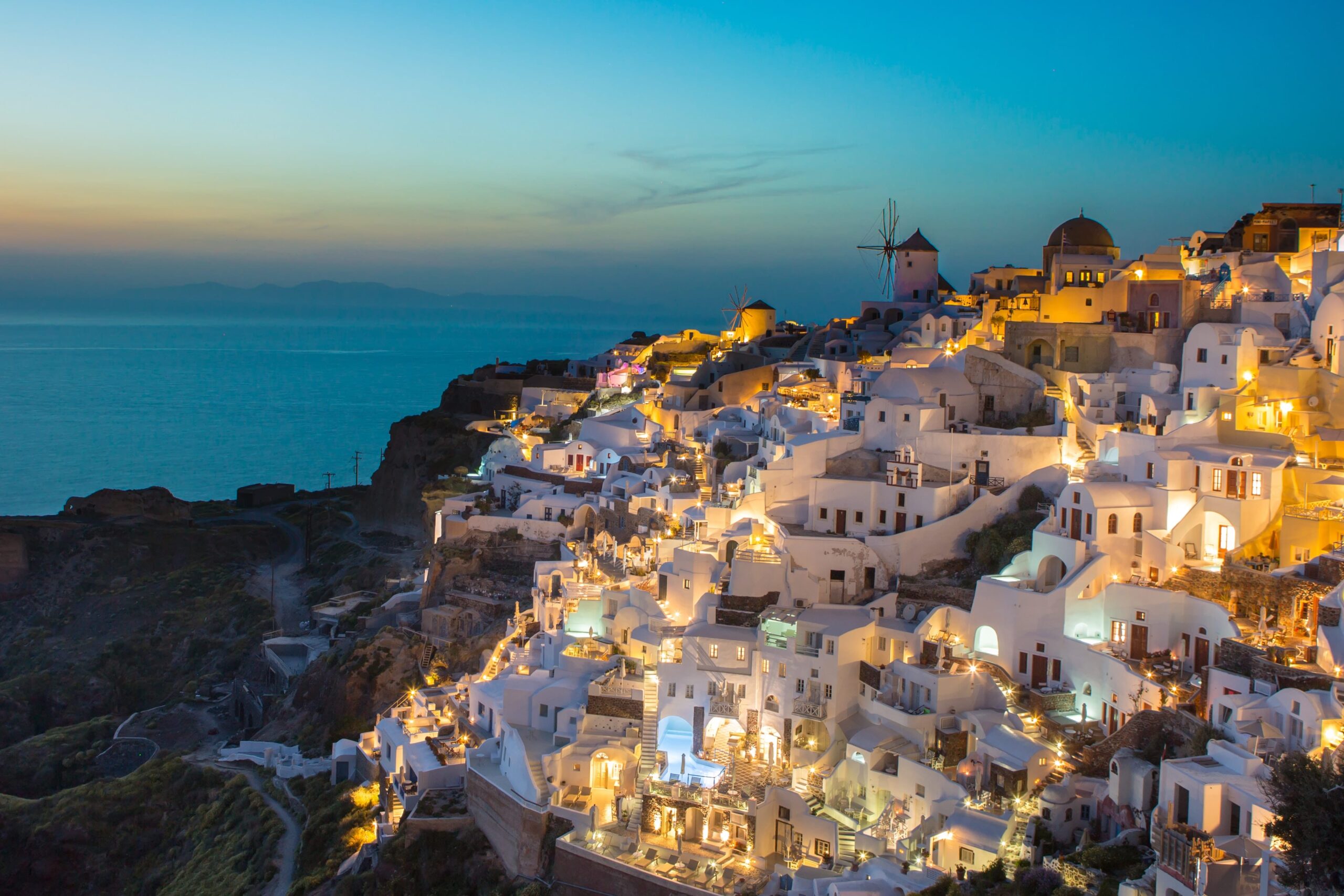

Meteora
One of the largest and most steeply erected complexes of Eastern Orthodox monasteries is located on the Meteora in central Greece. Each of the six monasteries is perched atop one of the area’s many massive natural pillars or rounded boulder hills. The ancient people of the region revered the rock formations for their spiritual significance, and in the 13th and 14th centuries, twenty-four monasteries were built atop the cliffs. Towards the northern border of the Plain of Thessaly, close to the Pineios river and the Pindus Mountains, is where you’ll find the spectacular Meteora monasteries. This area is also home to the little town of Kalabaka. Criteria I, II, IV, V, and VII were all met in order to add Meteora to the UNESCO World Heritage List. This word’s etymological roots may be traced back to the word for meteor, which gives it the meaning “lofty” or “elevated.”
8-day Itinerary in Greece
Day 1
Arrive in Athens
A warm welcome to Greece! Take your reserved transport, a rental car, or a cab as soon as you land in Athens and begin your journey to your hotel. Athens, like many European cities, has the benefit of being easily navigable on foot. That means you may forego renting a car unless you plan on making frequent trips to distant places. Check into your accommodation, and if you have time, visit the Acropolis, Athens’ must-see landmark. When you get there, be sure to spend some time at the Acropolis Museum, where you can learn more about the site’s rich history and see some of the artifacts that have been discovered there. Visit the Acropolis after the museum for breathtaking views of the city.
The Parthenon, the first structure of its kind to be constructed completely of marble, may be viewed while you are there. Your route in will take you through the Propylaea, Erechtheion, Temple of Nike, Ancient Theatre, and Odeon of Herodes Atticus. Once you’ve finished exploring the Acropolis, it’s time for lunch, grab yourself a traditional gyro for an authentic taste of the culture.
The next stop is the gorgeous Plaka district, which is home to both neoclassical and Byzantine architecture. Proceed to Agora, ancient Greece’s social, political, and cultural epicenter. When you’re done, take a stroll through the nearby Monastiraki marketplace. Finally, visit Philopappos Hill to take in a breathtaking sunset. You can spend the night at the Gazi neighborhood and then return to your lodgings for the night so that you may get some sleep and be refreshed for the day ahead.
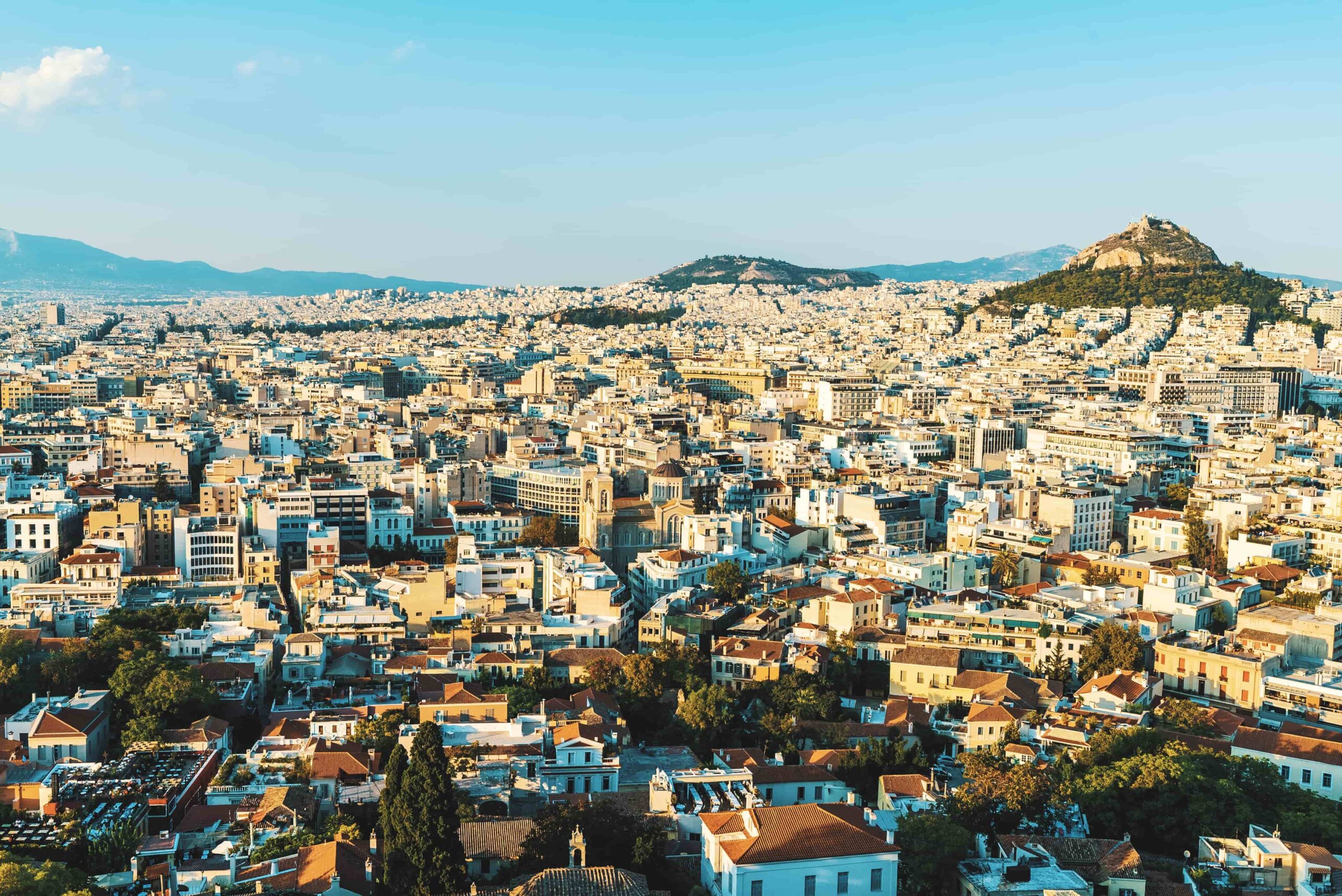
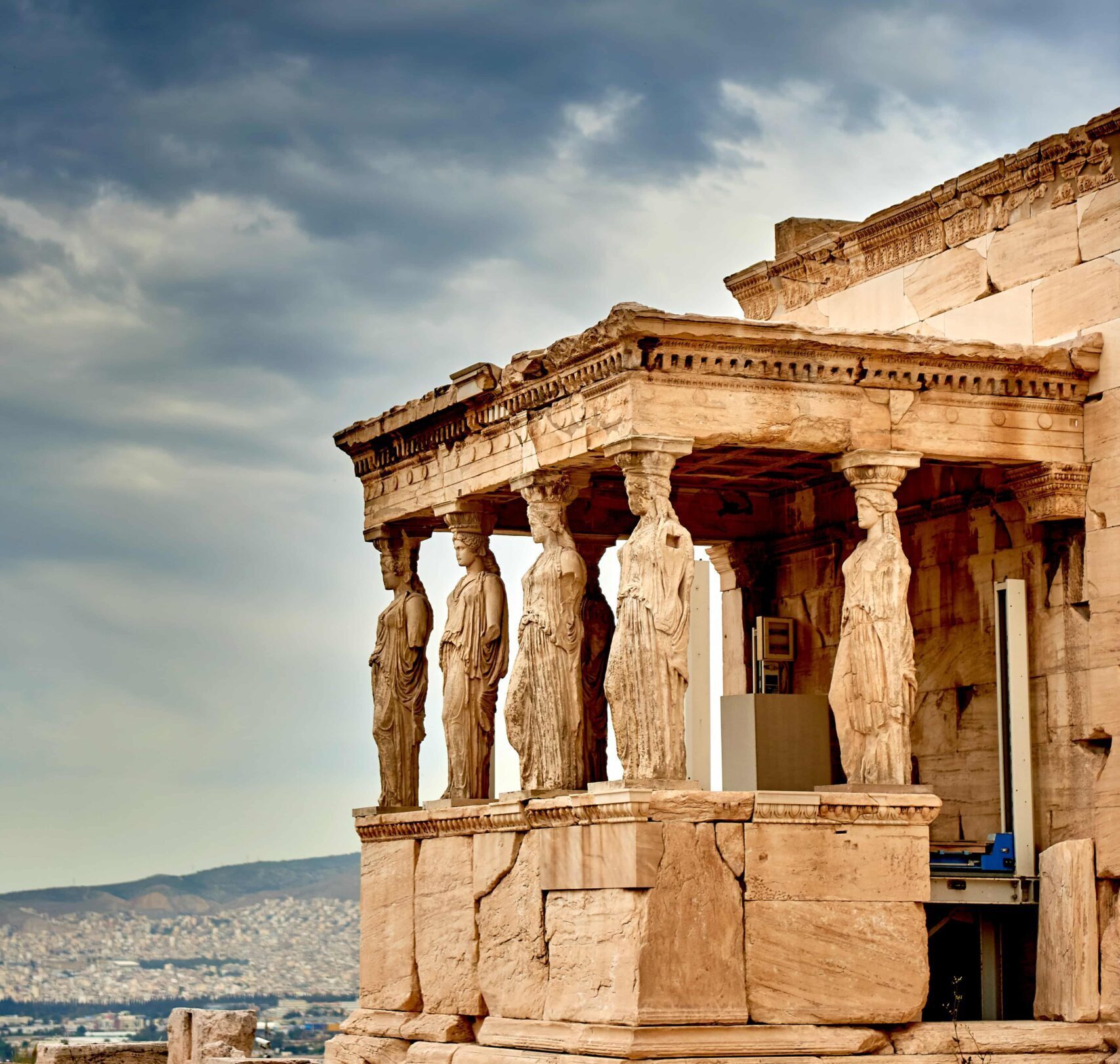

- Backpacker:
- Budget:
- Mid-range:
- Luxury:
Bedbox Hostel
Evripides Hotel
Amalia Hotel
Wyndham Grand Athens
Electra Metropolis
When it becomes dark, a foreign city may be twice as dangerous - especially if you don't understand the language and are unfamiliar with the area. There is little reason to be alarmed about walking alone in the city since there low crime rate in Athens and some of the only crimes are pickpockets. You can walk safely at day, but be wary while walking at night and be alert in crowded areas or unlit alleys or streets. You can always take taxis, if you don't feel comfortable, Be wary of petty crime by taking precautions mentioned in the safety section above.
From the Airport to Athens' Center
By Taxi
Getting to the heart of Athens by cab will take approximately 50 minutes and cost around 40 euros. Don't be intimidated by the length of the line. It has the potential to appear impressive, but in reality it is very quick.
By Metro
Avoid the hassle of driving at rush hour by hopping on Metro Line 3 (the blue line). In 45 minutes and for around €8, you may reach the heart of the city.
By Bus
Take the bus route X95 and you'll reach Syntagma Square in under one hour, every hour of the day. The cheapest way to go to the heart of the city only costs 6€.
Alternative Option
Another possibility is to inquire with the hotel about their airport transfer service. They can anticipate your arrival time and whisk you away from the terminal to your lodgings.
Day 2
Exploring Athens
Get going today at once to either Kallimarmaro or Panatheic Stadium after a hearty breakfast. Designed to accommodate a variety of athletic events, including chariot racing and gladiator bouts. It was renovated for the first Olympic Games in the modern era.
Keep exploring by visiting the Zappeion Park and National Garden, the Temple of Olympian Zeus, and the Arch of Hadrian. To witness the House of Parliament and the Changing of the Presidential Guard, head across the park to Athens’ largest plaza, Syntagma. Ermou Thoroughfare is Athens’ commercial street, and it’s easily accessible from Syntagma Square.
Then, stroll around Athens’ National Archaeological Museum to see artifacts from the Neolithic through the Roman periods that were unearthed in Greece. Come evening, head to Mount Lycabettus, one of the greatest spots in all of Athens to take in the sun going down. To get to the top, you may either walk or use the cable car. Return to your hotel once you’ve completed your business here.
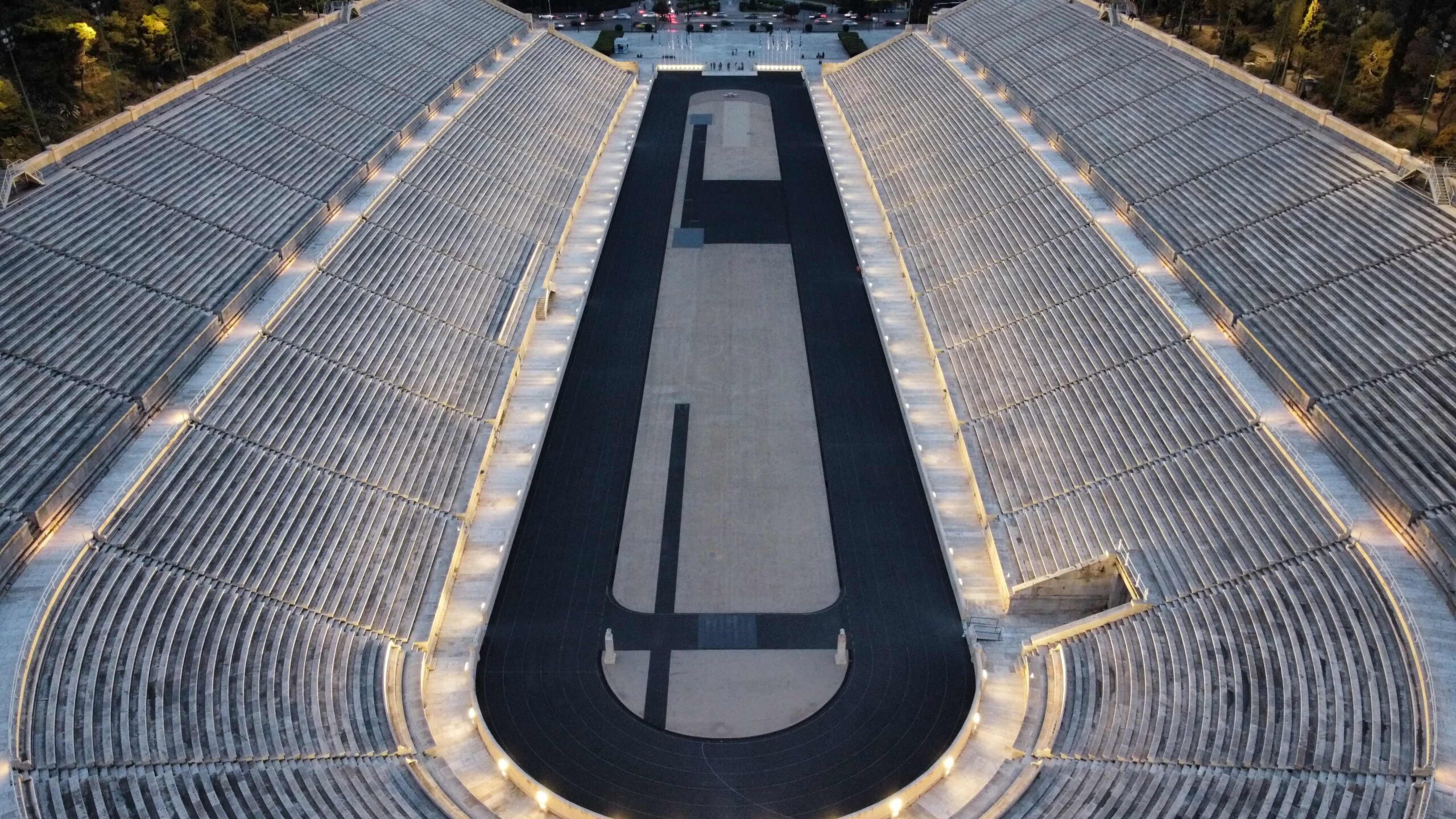
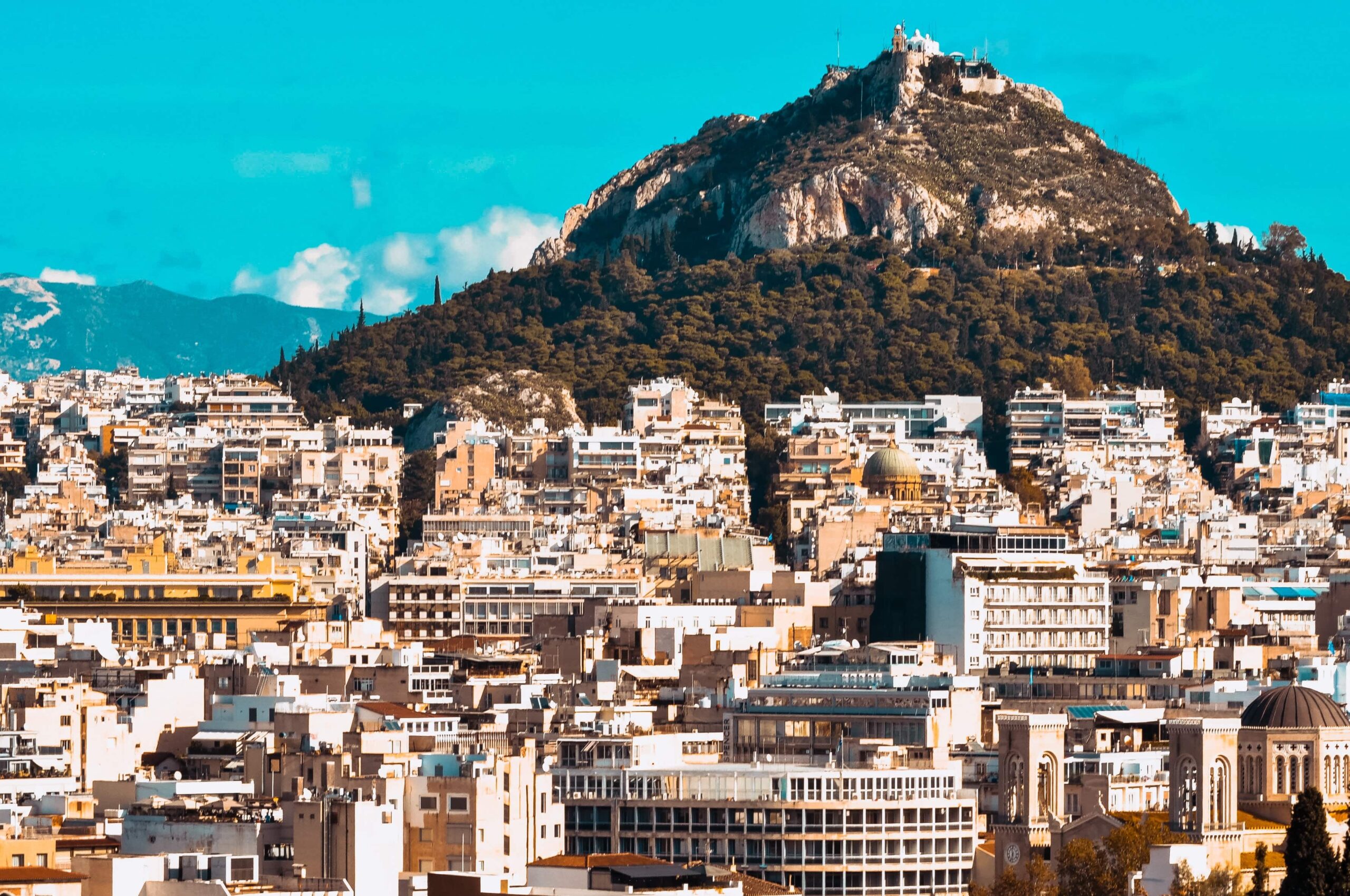
Day 3
A Day Trip from Athens
It looks like you should take a day excursion on your third day in Athens. After a delicious breakfast, you may pick from a wide variety of day trips, including visits to historical places outside of Athens, as well as trips to the beach at locations like Cape Sounion, the Peloponnese, Delphi, and the Saronic Islands.
A trip to Delphi from Athens takes around 2.5 hours. You can find the Temple of Apollo on Mount Parnassus, which is where the Pythia, the oracle of Delphi, would bring down divine decrees from the gods to earth. Not only will you get to see the theater and the stadium, but you’ll also get to take in a spectacular panorama of the valley below. The Delphi Archaeological Museum is also worth your time.
Options in the vicinity that are also worth considering
- Go to Cape Sounion, at the very tip of the Attic Peninsula, to see the Temple of Poseidon. Along the way, you’ll pass through some of the Coast of Apollo’s most renowned beaches. After that, you’ll go to Poseidon’s Temple. This temple is on a hill, and the view from there is stunning, especially after dusk.
- Travel to the Saronic Islands from Athens by spending the day on the water. Poros, Hydra, and Aegina are three islands worth seeing while you’re in the area. Lunch is on the house.
- A day journey to Mycenae and Epidaurus from Athens: Visit the ruins of ancient Mycenae, formerly the palace of King Agamemnon. The following step is a visit to Nafplio so that you may take in the sights of the Palamidi Fortress. At the conclusion of your journey, you will see Epidaurus and its ancient theater. The price includes entrance fees, transportation, a guide, and lunch.
- If you don’t want to get out of Athens at all, consider going to sites that you may have missed or haven’t gone to like The Ancient Agora, Hadrian’s Library, Temple of Olympian Zeus, Roman Agora, Aristotle’s Lyceum, or Kerameikos
Spend your final night in Athens reflecting on the incredible sights you saw today.


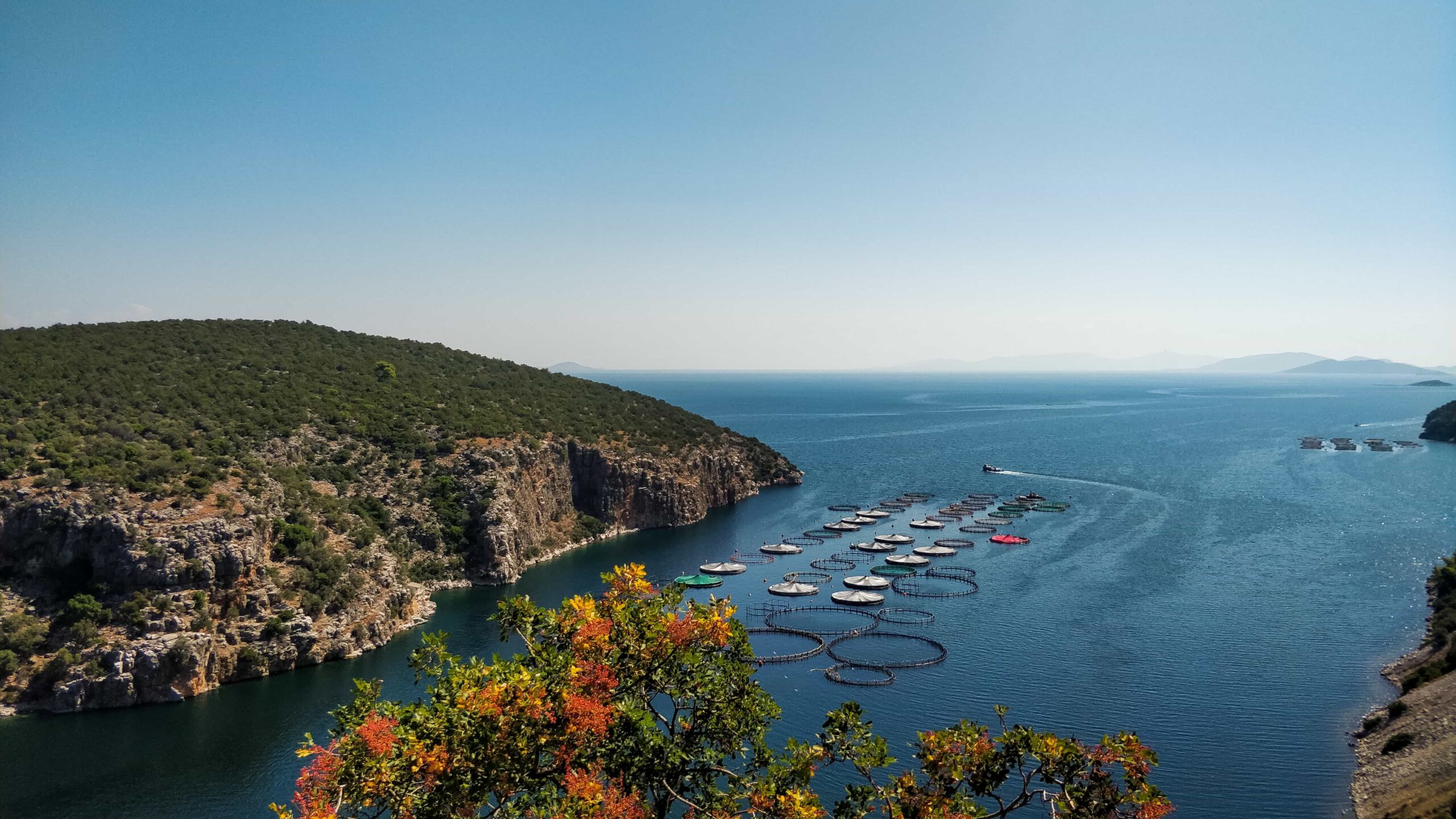

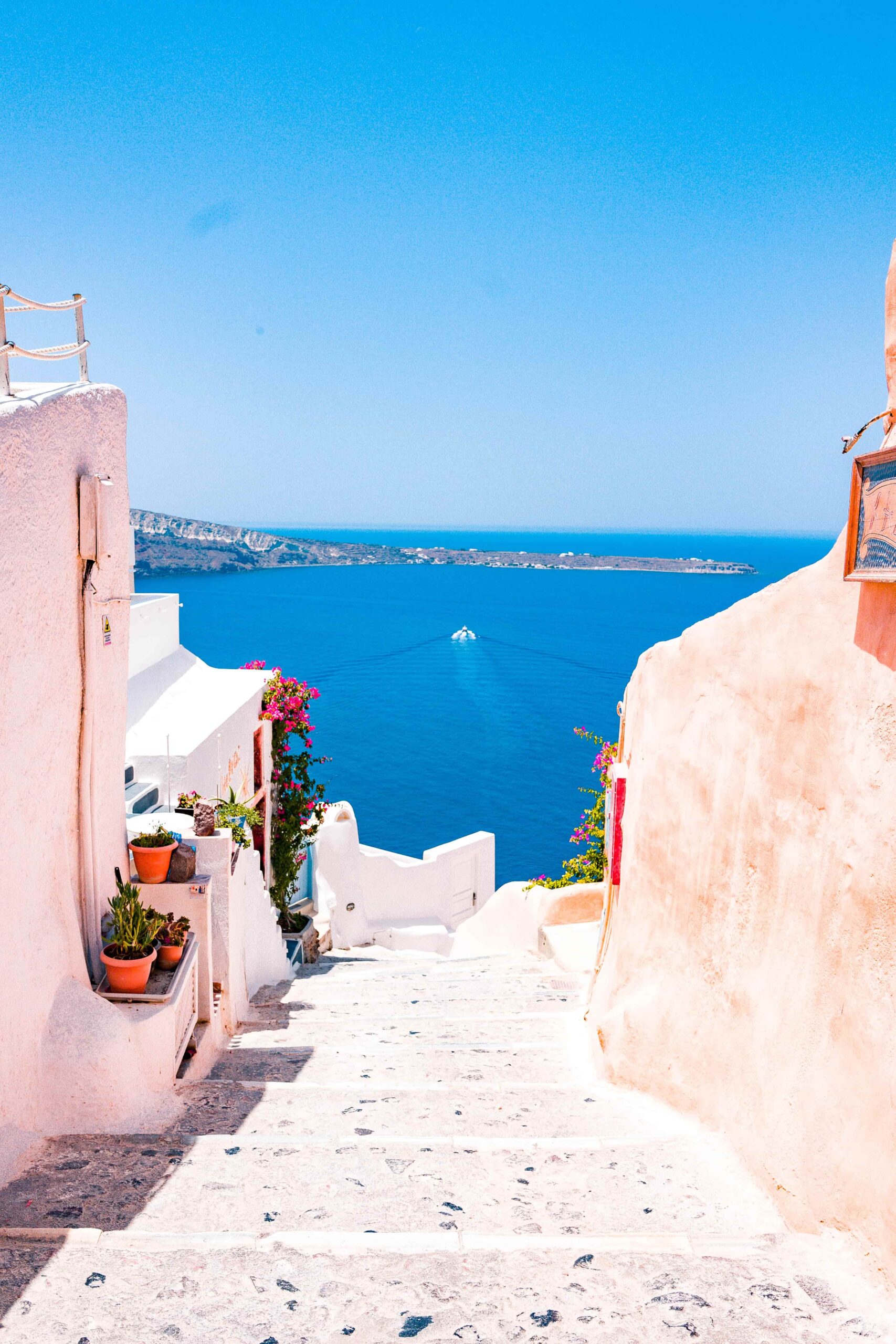
Days 4 to 6
Off to Santorini
Today, we’re going to experience a dramatic shift in the scenery by flying to the Cycladic island of Santorini. Getting there by ferry will take practically a whole day, so flying is the better option. Furthermore, having access to a rental car is a huge convenience while exploring Santorini.
Fira, a picture-perfect hamlet on the caldera’s edge, is first on the itinerary. Follow the signs through the picturesque neighborhood of white and blue homes and five-star hotels with infinity pools overlooking the ocean and the distant islets. Firostefani and Imerovigli are two other towns you may visit while in Fira; they are perched on the caldera’s very edge.
After that, fuel up with some local food like a souvlaki or gyro and drive or walk to the nearby village of Oia on Santorini. An hour or so before the mystical hour, find a nice vantage point from which to see the sun go down. At this time, everything seems even more gorgeous, thus a lot of people show up. Enjoy the evening as you choose and then return to your lodge for the night.
The next day, go across the island by car to find even more hidden gems. Pyrgos, Megalochori, and Emporio are three picturesque settlements worth a visit. Visit Akrotiri, another ancient city destroyed by a volcanic eruption like Pompeii. Akrotiri was inhabited by the Minoans. Mesa Vouno, a hill with breathtaking views of Ancient Thera, is another must-see.
Also, there are beaches to check out, albeit they may not be up to par with others across the globe due to their often stony nature. Red Beach, framed by towering ochre cliffs, is a popular destination due to its striking contrast to the black sands of Khamari and Perissa.
There, you may get a flight to Mykonos or head back home via a connection in Athens.
- Backpacker:
- Budget:
- Mid-range:
- Luxury:
Aethrio Hotel
Caldera Premium Villas
Theodora Suites Apartment
Andronis Boutique Hotel
Katikies Hotel
Galatia Villas
Lilium Santorini Villa
Cosmopolitan Suites – Small Luxury Hotels of the World
Aria Suites
Memories Beach Hotel
Rose Suites
Hippocampus Hotel
Meltemi Village Hotel
When it becomes dark, a foreign city may be twice as dangerous - especially if you don't understand the language and are unfamiliar with the area. There is little reason to be alarmed about walking alone in the city since there's low crime rate in Santorini and some of the only crimes are pickpockets. You can walk safely at day, but be wary while walking at night and be alert in crowded areas or unlit alleys or streets.
From the Athens to Santorini
By Ferry
By Plane
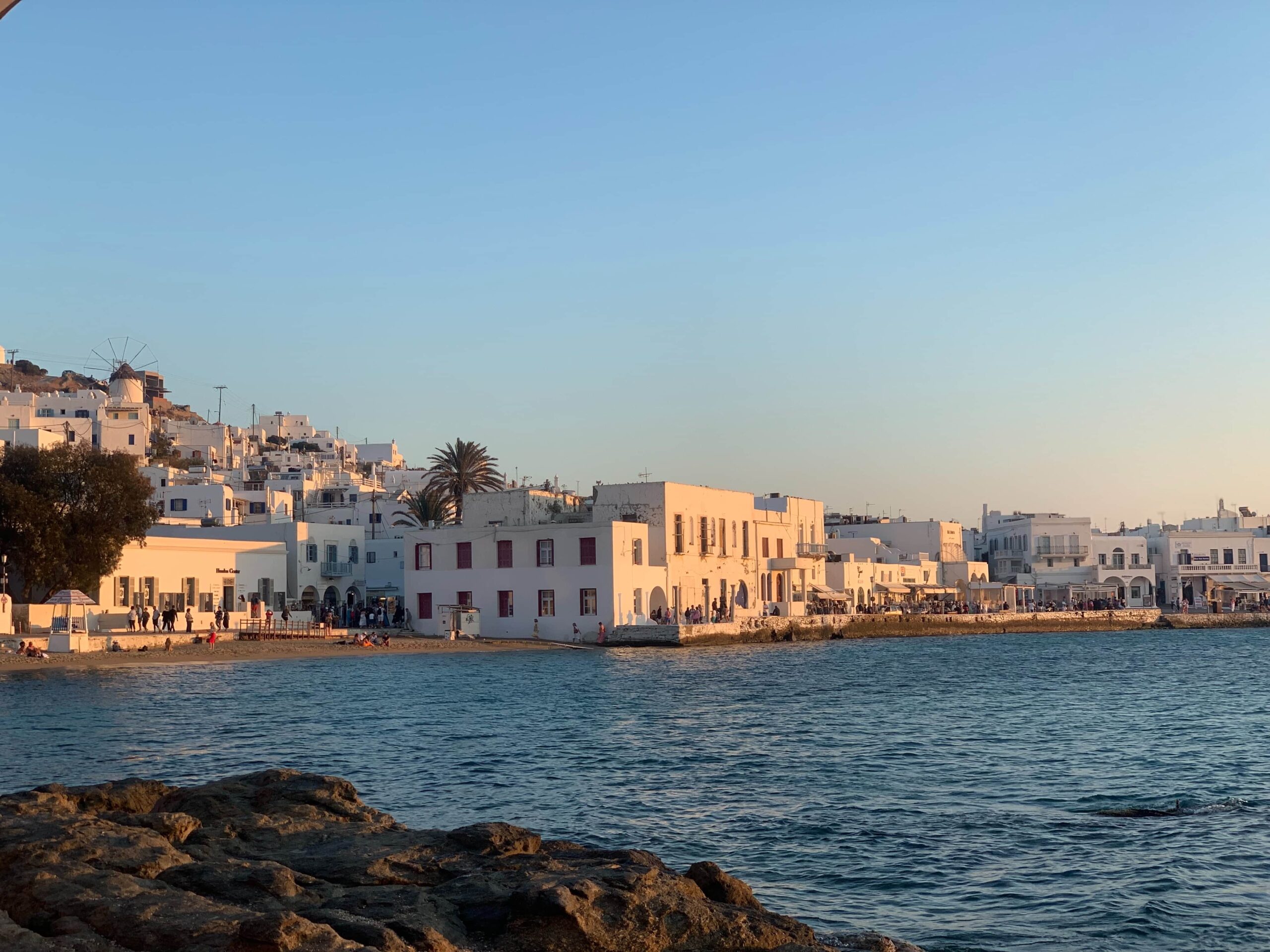

Dasy 6 to 8
Off to Mykonos
Mykonos is the more laid-back and charming island; it has the best beaches and is flatter than other Greek islands. You may get around Mykonos by renting a vehicle, taking the buses, or just walking.
Even on the island of Mykonos, a trip to a historic site is never too far away while you’re in Greece. Delos, a UNESCO World Heritage Site, is an excellent choice for a half-day excursion. The Delos Museum showcases many excavated wonders that are worth a look.
Restaurants, nightclubs, and other businesses compete to be the finest in Mykonos. As a result, finding a location to eat or relax while getting your lunch is not tricky.
While there see the beautiful windmills and walk around Mykonos town through Matogianni Street. Have lunch or dinner at Alefkandra, also known as Little Venice, and enjoy the views. Walk around the Old Harbor, and see the Panagia Paraportiani Church. If you’re craving some beach time, head to Agios Sostis Beach, Elia Beach, Kalo Livadi Beach, or Kalafatis Beach for a good time in the company of the water, sun, and maybe some good music.
- Backpacker:
- Budget:
- Mid-range:
- Luxury:
When it becomes dark, a foreign city may be twice as dangerous - especially if you don't understand the language and are unfamiliar with the area. There is little reason to be alarmed about walking alone in the city since there's low crime rate in Mykonos and some of the only crimes are pickpockets. You can walk safely at day, but be wary while walking at night and be alert in crowded areas or unlit alleys or streets.
From the Santorini to Mykonos
By Plane
By Ferry
From Mykonos to Athens
By Plane
By Ferry
Day 9
Last Day
This tour through Greece provided a glimpse into the life of the locals and the region’s rich history. You’re supposed to be at the airport yesterday, but if you didn’t go yesterday, today is your last chance. If you have some time left before your flight, you may go for one more walk around Athens. If not, you must hurry to the airport once you reach Athens.

The Most Popular Food in Greece
There is no finer example of Mediterranean cooking than Greek. Fruits and vegetables take center stage, while lamb and shellfish are the major sources of protein. The Ottoman menu is heavily influenced by Roman and Byzantine cuisine, as well as Balkan, Slavic, Levantine, Persian, and Arabic influences, although the dishes are still authentic. The food in Greece is very different from what you’ll find in most restaurants that brand themselves “Greek” outside of Greece. Gyros are basically a fast food option in Greece. Each dish is made with love and only the finest, freshest ingredients are used.

Gyros
Gyros are a delicious and affordable option for dinner. Gyro is the term for a type of roasting in which the meat is cooked while spinning on a vertical spit. Hold on, we’re not through here. The gyro is sliced and then piled inside a pita with condiments including sauce, onions, lettuce, tomatoes, and potato chips to amp up the flavor.

Souvlaki
Meat and veggies are skewered and grilled in this classic Greek fast food. Typically lamb is used, and it can be eaten on skewers, in a pita, or as the main part of a meal. Dinnertime accompaniments generally include potatoes. To save money, substitute pork for lamb in your next order of souvlaki.

Spanakopita
Spinach and feta cheese are baked inside of phyllo dough to create a delicious pie. If you’re on a tight budget, you may substitute ricotta for the mozzarella in this meal. It’s versatile enough to be made into a big casserole or little pastries for each person (recipe).

Keftethes
Inject some variety into your meal with these Greek meatballs, which are both juicy and crunchy. The Greek meal keftethes is typically served as an appetizer with a creamy sauce and pita bread. You can make a whole dinner out of this dish by serving it with basmati rice and Greek feta salad.

Baklava
Although its origin is disputed, baklava encapsulates all that is wonderful about Greek cooking. Many of the calories, fat, and sweetener in this meal come from the abundance of nuts, butter, and sugar. The crisp phyllo layers quickly absorb the sugary syrup when it is poured over them as soon as they come out of the oven. When it comes to Greek desserts, this is the one that everyone loves. The crisp crust and enticing scent heralded the beginning of a happy lunch.
What's the Travel Budget for Greece
Flights
- Flights start at roughly $18 from nearby countries. Tickets however on average cost around $500 and can cost way more depending on which class and from which country you depart from.
Accommodation
- Nomad Backpacking style travelers can expect to spend around $350 for a week
- Budget travelers can expect to spend around $420 for a week
- Mid-range travelers can expect to spend around $660 for a week
- Luxury travelers can expect to spend around $2,100 for a week
Food Budget (Three meals and drinks)
- Nomad Backpacking style travelers can expect to spend around $18 per person per day
- Budget travelers can expect to pay around $29 per person per day
- Mid-range travelers on average would cost $35 to $30 per person per day
- Luxury travelers can expect to pay around $65 to $110 per person per day
Overall Budget Styles (Not including Flights, Tours, Transportation, or Car Rental)
- Nomad Backpacking style travelers can expect to spend roughly $540 for a week
- Budget travelers can expect to spend close to $700 for one person for a week
- Mid-range travelers can expect to spend approximately $1,100 for one person for a week
- Luxury travelers can expect to spend around $3,050 for one person for a wee
Flights
- Flights start at roughly $18 from nearby countries. Tickets however on average cost around $500 and can cost way more depending on which class and from which country you depart from.
Accommodation
- Nomad Backpacking style travelers can expect to spend around $350 for a week
- Budget travelers can expect to spend around $420 for a week
- Mid-range travelers can expect to spend around $660 for a week
- Luxury travelers can expect to spend around $2,100 for a week
Food Budget (Three meals and drinks)
- Nomad Backpacking style travelers can expect to spend around $18 per person per day
- Budget travelers can expect to pay around $29 per person per day
- Mid-range travelers on average would cost $35 to $30 per person per day
- Luxury travelers can expect to pay around $65 to $110 per person per day
Overall Budget Styles (Not including Flights, Tours, Transportation, or Car Rental)
- Nomad Backpacking style travelers can expect to spend roughly $540 for a week
- Budget travelers can expect to spend close to $700 for one person for a week
- Mid-range travelers can expect to spend approximately $1,100 for one person for a week
- Luxury travelers can expect to spend around $3,050 for one person for a wee
Flights
- Flights start at roughly $18 from nearby countries. Tickets however on average cost around $500 and can cost way more depending on which class and from which country you depart from.
Accommodation
- Nomad Backpacking style travelers can expect to spend around $350 for a week
- Budget travelers can expect to spend around $420 for a week
- Mid-range travelers can expect to spend around $660 for a week
- Luxury travelers can expect to spend around $2,100 for a week
Food Budget (Three meals and drinks)
- Nomad Backpacking style travelers can expect to spend around $18 per person per day
- Budget travelers can expect to pay around $29 per person per day
- Mid-range travelers on average would cost $35 to $30 per person per day
- Luxury travelers can expect to pay around $65 to $110 per person per day
Overall Budget Styles (Not including Flights, Tours, Transportation, or Car Rental)
- Nomad Backpacking style travelers can expect to spend roughly $540 for a week
- Budget travelers can expect to spend close to $700 for one person for a week
- Mid-range travelers can expect to spend approximately $1,100 for one person for a week
- Luxury travelers can expect to spend around $3,050 for one person for a wee
Flights
- Flights start at roughly $18 from nearby countries. Tickets however on average cost around $500 and can cost way more depending on which class and from which country you depart from.
Accommodation
- Nomad Backpacking style travelers can expect to spend around $350 for a week
- Budget travelers can expect to spend around $420 for a week
- Mid-range travelers can expect to spend around $660 for a week
- Luxury travelers can expect to spend around $2,100 for a week
Food Budget (Three meals and drinks)
- Nomad Backpacking style travelers can expect to spend around $18 per person per day
- Budget travelers can expect to pay around $29 per person per day
- Mid-range travelers on average would cost $35 to $30 per person per day
- Luxury travelers can expect to pay around $65 to $110 per person per day
Overall Budget Styles (Not including Flights, Tours, Transportation, or Car Rental)
- Nomad Backpacking style travelers can expect to spend roughly $540 for a week
- Budget travelers can expect to spend close to $700 for one person for a week
- Mid-range travelers can expect to spend approximately $1,100 for one person for a week
- Luxury travelers can expect to spend around $3,050 for one person for a wee
If you want to know what to pack, read this list below:
- This is a casual European with moderate climate that tends to get hot in summer and cold and rainy in winter, dress accordingly
- Raincoat or Light Waterproof Jacket
- Hiking Boots or Sturdy Sneakers (Shoes You Don’t Mind Getting Wet)
- Sunscreen
- Insect Protection – Repellent and Clothing
- Sunglasses and Sun Hat
- Water Shoes
- Beach Towels/Sarong
- Dry Bag
- Money Belt or Cross Bag
- Portable Medical Kit
- Flashlight or Headlamp
- Copies of your passport.
- Get all the needed vaccinations before traveling
- A power bank is a must in any travel.
- Always have some cash with you just in case there are no ATMs and if you are dealing with a business that solely accepts cash
- Get yourself an adapter for your gadgets
- 1 toothbrush
- 1 tube of toothpaste
- 1 razor
- 1 package of dental floss
- 1 small bottle of shampoo
- 1 small bottle of shower gel
- 1 towel
- Deodorant
- Band-Aids
- Hydrocortisone cream
- Antibacterial cream
- Earplugs
- Tylenol
- Hand sanitizer (germs = sick = bad holiday)
- A key or combination lock
- Zip-lock bags
- Plastic bags (great for laundry)
- Universal charger/adaptor
- LifeStraw (A water bottle with a purifier)
- 1 dry shampoo spray & talc powder
- 1 hairbrush
- Makeup you use
- Hairbands & hair clips
- Feminine hygiene products
Clothing For Boys
- 1 pair of jeans or khaki pants
- 1 pair of shorts
- 1 bathing suit
- 5 T-shirts
- 1 long-sleeved T-shirt
- 1 pair of flip-flops
- 1 pair of sneakers
- 6 pairs of socks
- 5 pairs of boxer shorts
Clothing For Girls
- 1 swimsuit
- 1 sarong
- 1 pair of stretchy jeans
- 1 pair of leggings
- 2-3 long-sleeve tops
- 2-3 T-shirts
- 3-4 spaghetti tops
- 1 light cardigan
Want to plan your own trip, here are some of the best resources that can help you
- Skyscanner – They search small websites and budget airlines that larger search sites tend to miss. They are hands down the number one place to start.
- Momondo – This is another favorite flight search engine because they search such a wide variety of sites and airlines. Always check here too.
- Booking.com – The best all-around booking site that constantly provides the most affordable and lowest rates. They have the widest selection of budget accommodation.
- Couchsurfing – This website allows you to stay on people’s couches or spare rooms for free. It’s a great way to save money while meeting locals who can tell you the ins and outs of their city. The site also lists events you can attend to meet people (even if you’re not staying with someone).
- Intrepid Travel – If you want to do group tours, go with Intrepid. They offer good small group tours that use local operators and leave a small environmental footprint.
- Grassroots Volunteering – For volunteering, Grassroots Volunteering compiles a list of good local volunteer organizations that keep the money within the community.
- Get Your Guide – Get Your Guide is a huge online marketplace for tours and excursions. They have tons of tour options available in cities all around the world, including everything from cooking classes, walking tours, street art lessons, and more! It has the world’s largest collection of things to do with more than 30,000 activities in 7500 destinations.
- SafetyWing – Safety Wing offers convenient and affordable plans tailored to digital nomads and long-term travelers. They have cheap monthly plans, great customer service, and an easy-to-use claims process that makes it perfect for those on the road.
- Trip Advisor: Check the reviews and then book your accommodation. TripAdvisor is where you go when you want to compare prices with multiple accommodation providers.
- VRBO: is the main search engine to use when you are looking for a home or apartment rental. It can sometimes be cheaper than hotels and it is the best way to stay in areas that offer a more local feel.
- Hostelworld: With one of the largest databases of hostels in the world, Hostelworld is the go-to site when you are looking for budget accommodation.
- Rome 2 Rio: If you want to see how to get somewhere by plane, train, bus, ferry, or car Rome2Rio lays it all out for you as well as related costs.
- World Nomads Insurance: When traveling you should always have travel insurance. We have found the best bang for your buck is by far World Nomads.
Final Thoughts on Greece
Greece is appealing for many reasons: its rich history and culture, which can be seen in its traditional architecture and rural landscapes, its unusual and beautiful landmarks, many of which are listed on the UNESCO World Heritage Sites list, its unbelievable warmth despite the cooler weather, its exciting music and festivities, and its vivid picture-perfect surroundings of highlands and pristine beaches, ideal for lounging on and watching the sunset. Evidence suggests that Greece’s history extends back much further than the 7,000 B.C. when it was first documented. The cradle of Western civilisation and a meeting point for a number of different cultures; one of the top travel destinations. With its stunning scenery, wide variety of fauna, and intriguing historical sites, Greece is quickly becoming a popular tourist destination. Intent on making a trip to Greece?
When did you last visit Greece? Post your thoughts, questions, and concerns down below.